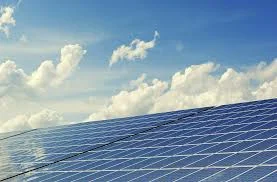What is it?
There is a recent trend of incorporating wellness trends into building and workplace design. Our society has reached new levels of health challenges, which have precipitated this trend, not limited to stress, work/life imbalance due to constant connection and technology, air and water pollution, lack of exercise, an increasing number of working years, and poor diet. There is also a recent recognition of the impact of the built environment to cognitive development and a neurological connection linking physical and emotional development. We spend more than 90% of our time indoors and our workplaces and institutions can play a big part in improving human health through wellness or salutogenic design.
The WELL Building Standard was launched in October 2014 by Delos to address health issues related to office environments. It is the first building start focusing on health and wellness of people within the built environment. The standard outlines strategies for the improvement of air and water quality, nourishment, fitness, the mind, light, and comfort. Similar to LEED, WELL has a rating systems that allows buildings to be certified to certain levels of WELLness: Silver, Gold, and Platinum, and has a number of overlapping features. The certification can be used on both new and existing buildings as well as interior and core and shell projects. There are currently pilot projects underway for certifying education facilities, retail, restaurant, commercial kitchen, and multifamily residential projects.
The project is documented using a verification matrix which allows teams to track the requirements for each credit. In order to ensure the wellness components of the project are functional, a performance verification must be conducted on the building for one year to evaluate several environmental parameters and achieve certification. Additionally, in order to maintain certification, recertification of the project must be done every three years (excluding Core and Shell projects).
Each of the credits in the WELL Building Standard are tied to the body system that it will benefit from digestive to endocrine to muscular. A sampling of the 100 features includes strategies for moisture management, antimicrobial surfaces, drinking water promotion, safe food preparation, mindful eating, active furnishings, olfactory comfort, workplace family support, and material transparency.
The Pilot for Educational Facilities includes the following additional credits which are geared toward health and wellness in schools:
- Access to healthy food
- Strategic dining area design (using Smart Lunchroom Assessment Scorecard and a convenience line for smart food choosers)
- Fitness requirements, including sufficient lighting, sidewalks, crosswalks, safe routes to school, and playgrounds
- Impact reducing flooring for a better acoustic environment
- Education space provisions for to avoid classroom disruptions and stress
How much does it cost?
The cost to certify are broken up by registration, certification, and performance verification costs. Registration ranges from $1,500-$10,000 depending on the project scope. Certification fees start at $4,000 and range from $0.08-$0.23 per square foot depending on type and size of the project. Performance verification costs approximately $9,000 and ranges from $0.15-$0.35 per square foot. A 100,000 square foot building can expect to pay at least $54,500 for a new or existing building certification under the WELL standard or $81 per occupant. These costs include the registration and certification only and do not include the cost of implementing the measures or consulting.
The cost to pursue individual credits varies. For new construction, it is often easier to integrate into the design and existing buildings tend to be constrained by the features they already have in place. A recent buildout project completed with WELL features came to less than $1 per square feet in additional costs, while one of the first reported a premium of 1.73% ($3.60/sf)1 2. Building owners have indicated that health buildings rent as high as 20% more than market rate. In addition, there are operational and savings which drive down the cost as well as gains in productivity.
What are the benefits to sustainability?
Several studies have demonstrated the benefits of healthy buildings on student performance. Recent studies from Harvard indicate that improving indoor air quality has a positive effect on cognitive function, including decision-making, attention, concentration, and memory as measured by percentage of outside air and level of particulates3. Daylight is also a key component of sustainability and healthy design with demonstrated impacts of increased attendance and faster test scores for students4 5.
Chronic exposure to noise can lead to deficits in test scores and student achievement tests and impede comprehension and concentration. Past research also tied healthy buildings to employee retention and reduced absenteeism, as well as increased value. By including healthy design principles in a project, we can ensure that both students and faculty function peak performance.
1 http://www.nreionline.com/office/well-certification-worth-it-developers
2 Whitney Austin Gray, Delos. Expanding Salutogenic Design with the WELL Building Standard. 2016
3 2016. Environmental Health Perspectives. “Associations of Cognitive Function Scores with Carbon Dioxide, Ventilation, and Volatile Organic Compound Exposures in Office Workers: A Controlled Exposure Study of Green and Conventional Office Environments.” Web: https://www.ncbi.nlm.nih.gov/pmc/articles/PMC4892924/
4 Heshong Mahone Group. (1999). Daylighting in Schools: An Investigation into the Relationship Between Daylighting and Human Performance. Pacific Gas and Electric Company. Web: http://h-m-g.com/downloads/Daylighting/schoolc.pdf
5 Healthy Schools Network, Inc. (2012). Daylighting. Web: http://www.healthyschools.org/downloads/Daylighting.pdf










